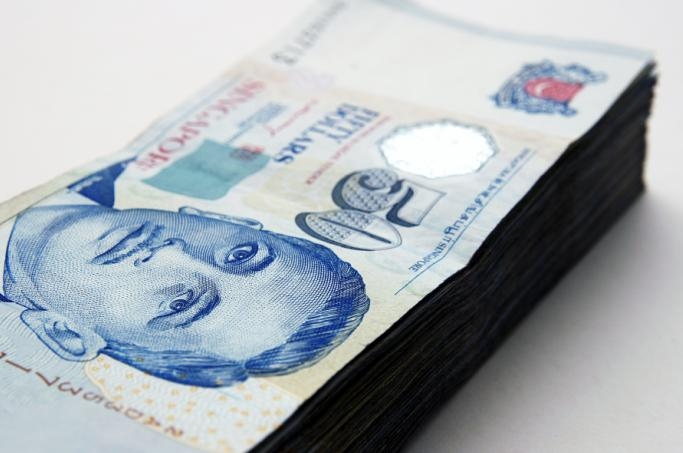
Singapore dollar holds steady at $1.2794 against the greenback
The local currency is forecast to drift to $1.30 by the end of 2012.
IG Markets Singapore said:
Last night was a bumpy one for currencies with conflicting news coming out of global markets.
Risk currencies were initially lifted by China’s unexpected decision to cut interest rates with Asian currencies strengthening.
However after Ben Bernanke’s comments to Congress, risk currencies gave up all their gains.
The Fed downplayed hopes of announcing a fresh round of asset buying, known as QE3.
The Singapore dollar currently trades at $1.2794 against the greenback this morning holding steady.
Economists have turned fairly bearish against Asian currencies and their ability to weather the crisis from the eurozone.
Some feel the local currency will drift to $1.30 by the end of the year, after slumping to as low as $1.35 if Greece leaves the eurozone.
GFT meanwhile noted (for 7 June 2012 trading):
Fed Chairman Ben Bernanke kicked off a rally in the U.S. dollar this morning by sounding less dovish than everyone had anticipated.
Coming off the heels of two abysmally weak non-farm payroll reports, investors around the world expected Bernanke to say I told you so and prepare the market for easier monetary policy this month. Instead, the Fed Chairman downplayed the deterioration in job growth by saying that it may have been exaggerated by seasonal adjustments and unusually warm weather.
He sounded more moderate than dovish, causing the dollar to soar as traders reverse their QE3 bets. The Fed is still prepared to act according to Bernanke but he wants to keep the market guessing about QE3. A lot is expected to happen between now and June 20th and perhaps Bernanke is conspiring with Draghi to put additional pressure on European leaders.
With FOMC voters Yellen and Lockhart committed to the idea of more stimulus, the central bank still leans towards easier monetary policy and we believe Bernanke shares this view as well but doesn't want to give away too much before the FOMC meeting and the G20.
Another possibility is that these central banks are gearing up for coordinated action and want to keep it a surprise. The decline in jobless claims won't be enough to convince the Fed that additional easing isn't necessary.
RBS, on the other hand, reported (for 7 June 2012 trading):
Most USD currency pairs are poised to close the day little changed from yesterday's closes, but a number of major events took place today, none more important for global risk assets in our view than China cutting its 1-year lending rate, not the reserve requirement ratio, by 25bp.
Falling commodity prices and inflation pressures in Asia are allowing further policy flexibility to support growth and our EM Economics team sees the PBOC's policy changes as a step towards interest rate deregulation.
Risk seeking sentiment surged on the back of the PBOC interest rate cut but Fed Chairman Bernanke's testimony tempered the advance and strengthened the USD after he failed to signal QE, which was in line with the expectations of our US Economics team.
While we still see the prospects for June easing as better than even, the testimony in our view makes a lengthening of the maturity extension program (Operation Twist) more likely than outright balance sheet expansion. This would be in our view a USD positive as Operation Twist does not increase the supply of USD because the Fed sterilizes its purchases with offsetting sales.
Finally, the Bank of England left the policy rate and asset purchase program total unchanged as expected. No change in policy means no statement, so the focus now shifts to the MPC minutes on 20 June and whether any other members joined Miles in voting for additional QE.
























 Advertise
Advertise






